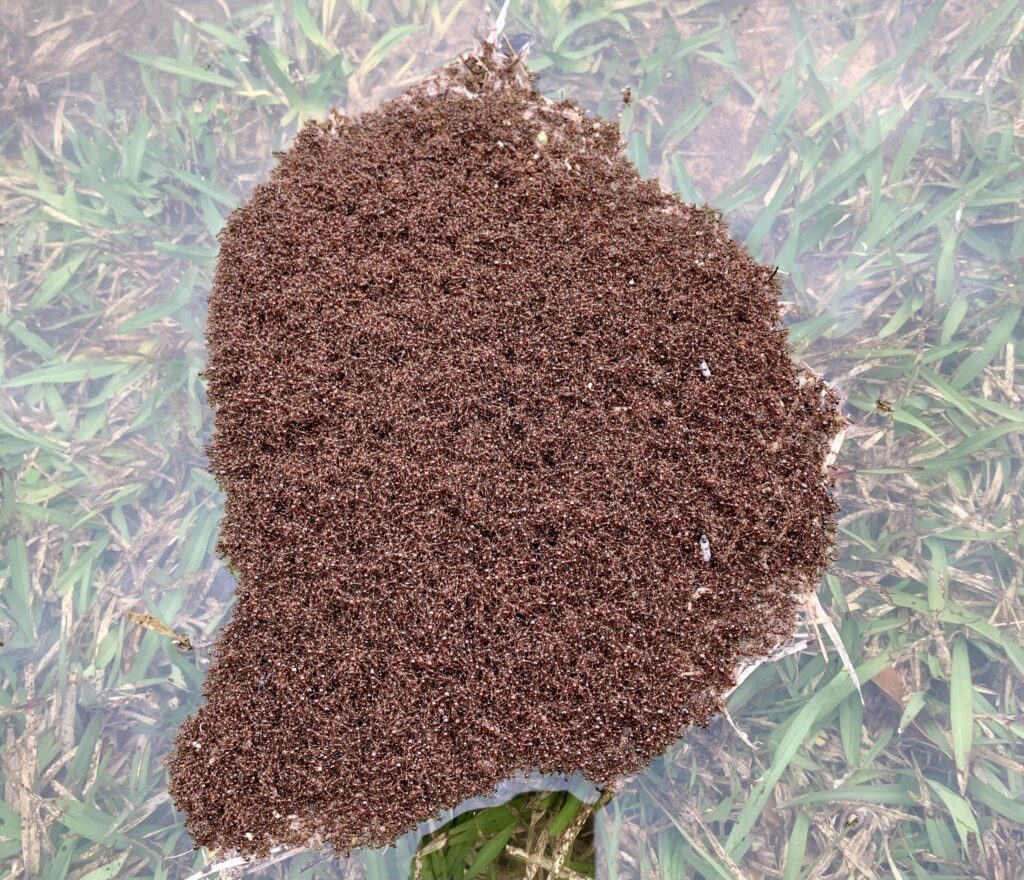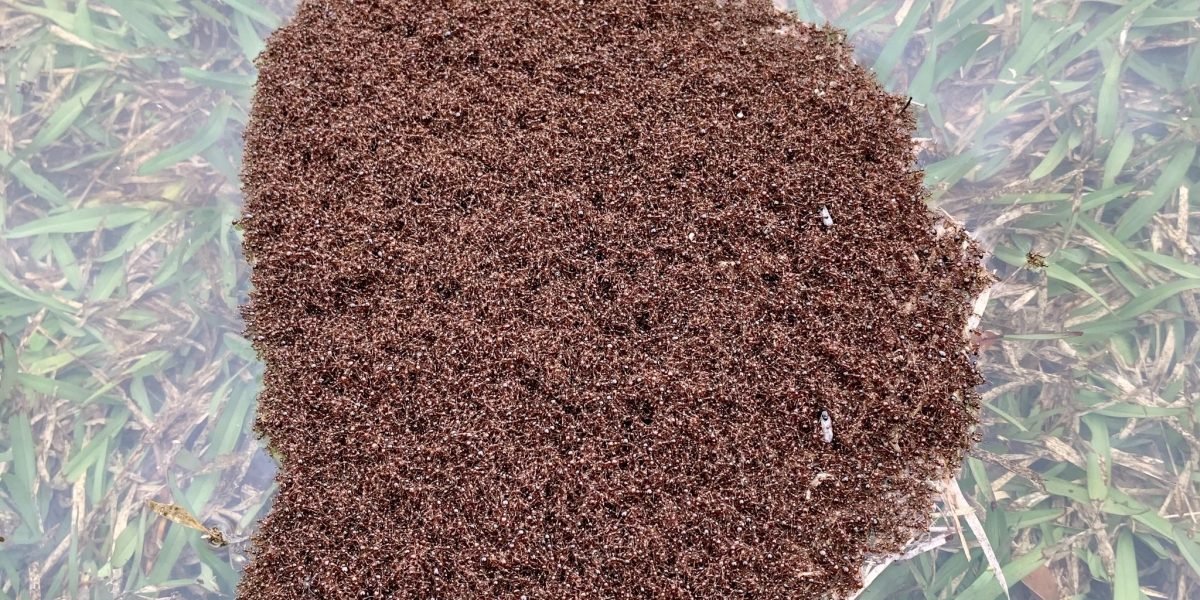When heavy rains roll through Houston, many homeowners notice an unwelcome surge in fire ant activity. Seemingly overnight, fire ant mounds pop up in yards, parks, and even sidewalks. If you’re wondering why you see fire ants after rain and how to handle them effectively, you’re not alone.
In this guide, we’ll break down what happens to fire ant mounds after rain, why you’re seeing more of them, and what you can do to prevent or treat infestations, especially if you’re dealing with biting ants around your property.
Here's What We'll Cover:
ToggleOverview of Fire Ants
Fire ants are aggressive, biting ants common in the southern United States, especially in Houston, Texas. Known for their reddish-brown color and painful bites, fire ants build large underground colonies and surface mounds to protect their queen and workers.
Importance of Understanding Their Behavior
Knowing how fire ants behave, particularly after rain, is key to managing and preventing infestations. Rain not only affects their movement but also influences when and where they build new mounds.
Why Do Fire Ants Come Out After Rain?
Effects of Rain on Fire Ant Behavior
Rainwater floods underground tunnels, forcing fire ants to evacuate. To survive, colonies rapidly move upward and construct new fire ant mounds after rain to avoid drowning. This is why you often see a sudden spike in mound activity right after storms.
The Role of Moisture in Fire Ant Activity
Moist soil makes it easier for fire ants to dig and rebuild their colonies. Wet conditions also attract insects and other food sources, which in turn draw fire ants closer to the surface. This combination of survival instinct and feeding opportunity is why fire ants become more visible and active after rainfall.
Fire Ant Mounds After Rain
What Happens to Mounds Post-Rain
After rainfall, fire ants often build fresh mounds in open, sunny areas where the soil is soft. These new mounds can appear rapidly, sometimes within just a few hours.
Why Do Fire Ant Mounds Show Up After Rain?
Flooding displaces entire colonies, prompting them to build upward and outward. This explains the sudden appearance of fire ant mounds after rain, often in places they weren’t seen before.
Signs of a Fire Ant Infestation
- Multiple fresh mounds
- Swarming ants on sidewalks or patios
- Painful stings or biting ants when walking near grassy areas
- Ants nesting near electrical boxes, tree bases, or driveways
If you notice any of these signs, it’s time to consider your fire ant treatment options.
GreenGate Turf, Pest, & Irrigation offers professional, pet safe fire ant control.
Treatment Options for Fire Ants
Types of Fire Ant Control Products
- Granular baits – Slow-acting but effective when applied properly
- Contact insecticides – Quick results, but may not eliminate the colony
- Natural solutions – Boiling water or diatomaceous earth (limited success)
Professional Fire Ant Treatment vs. DIY Methods
DIY methods can offer short-term relief, but often fail to eliminate the queen or entire colony. For more persistent infestations, professional fire ant treatment is the most reliable fire ant killer. Experts use targeted strategies and commercial-grade products that penetrate deep into the colony.
Best Practices for Effective Control
- Apply fire ant bait in early morning or evening when ants are foraging
- Avoid disturbing mounds before treatment
- Reapply bait after 10–12 weeks if needed
- Combine mound treatments with broadcast applications for full coverage
Conclusion
Summary of Key Points

- Fire ant mounds show up after rain as colonies move to safer ground
- Professional treatment is the most effective way to eliminate infestations
Tips for Prevention
- Keep lawns trimmed and free of debris
- Seal cracks and crevices near foundations
- Avoid overwatering your yard
- Treat your property regularly with preventative bait
When to Seek Professional Help
If you’re dealing with recurring mounds or painful stings, don’t wait. Contact GreenGate Turf & Pest in Houston, TX, to schedule a professional fire ant treatment and protect your home year-round.

